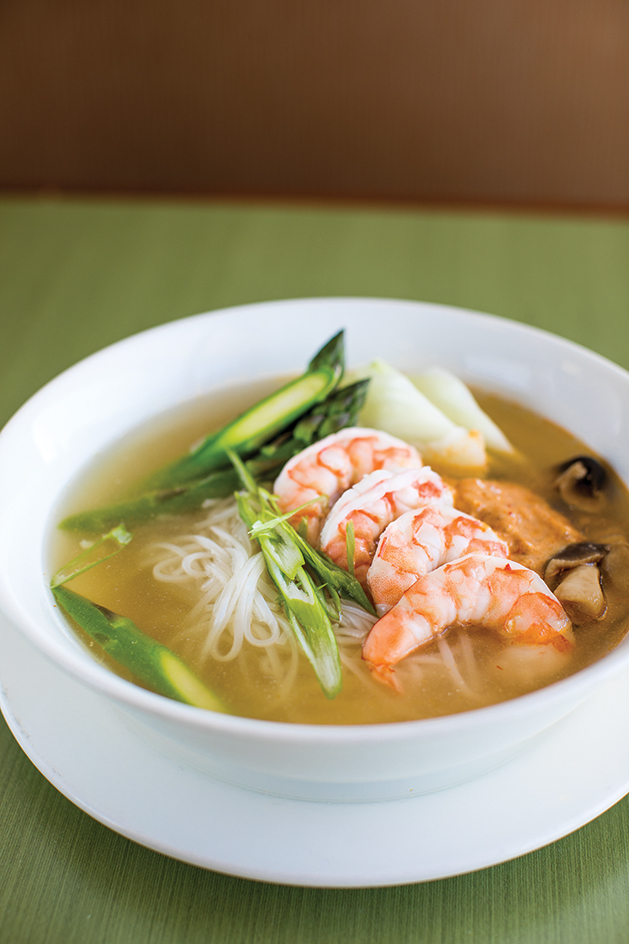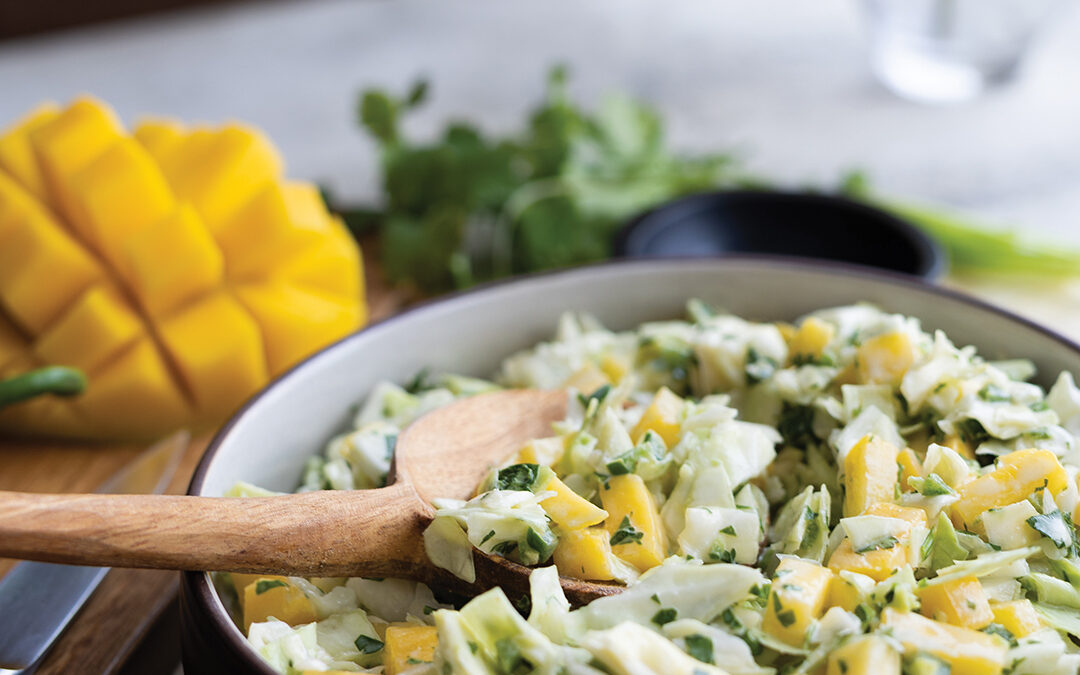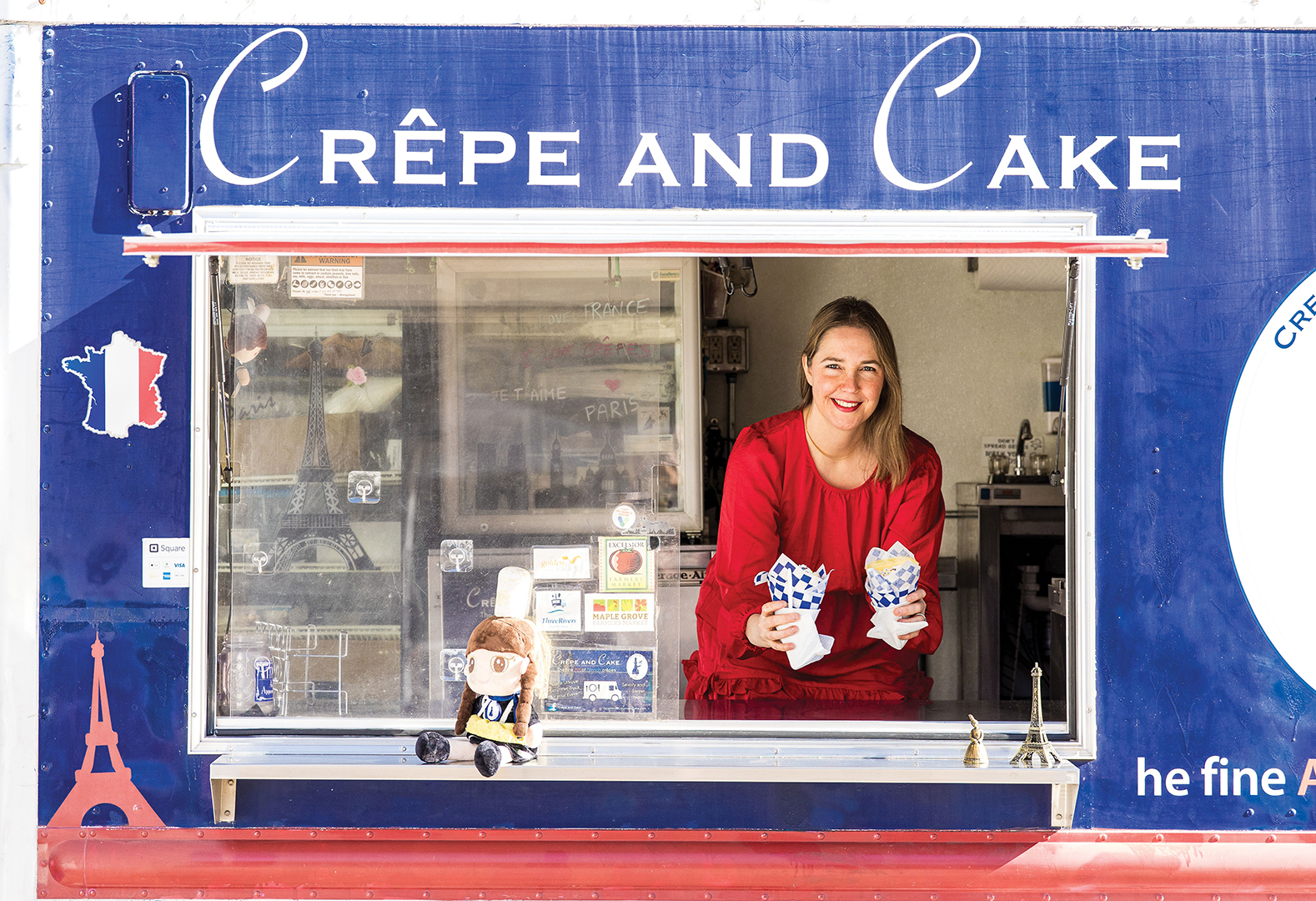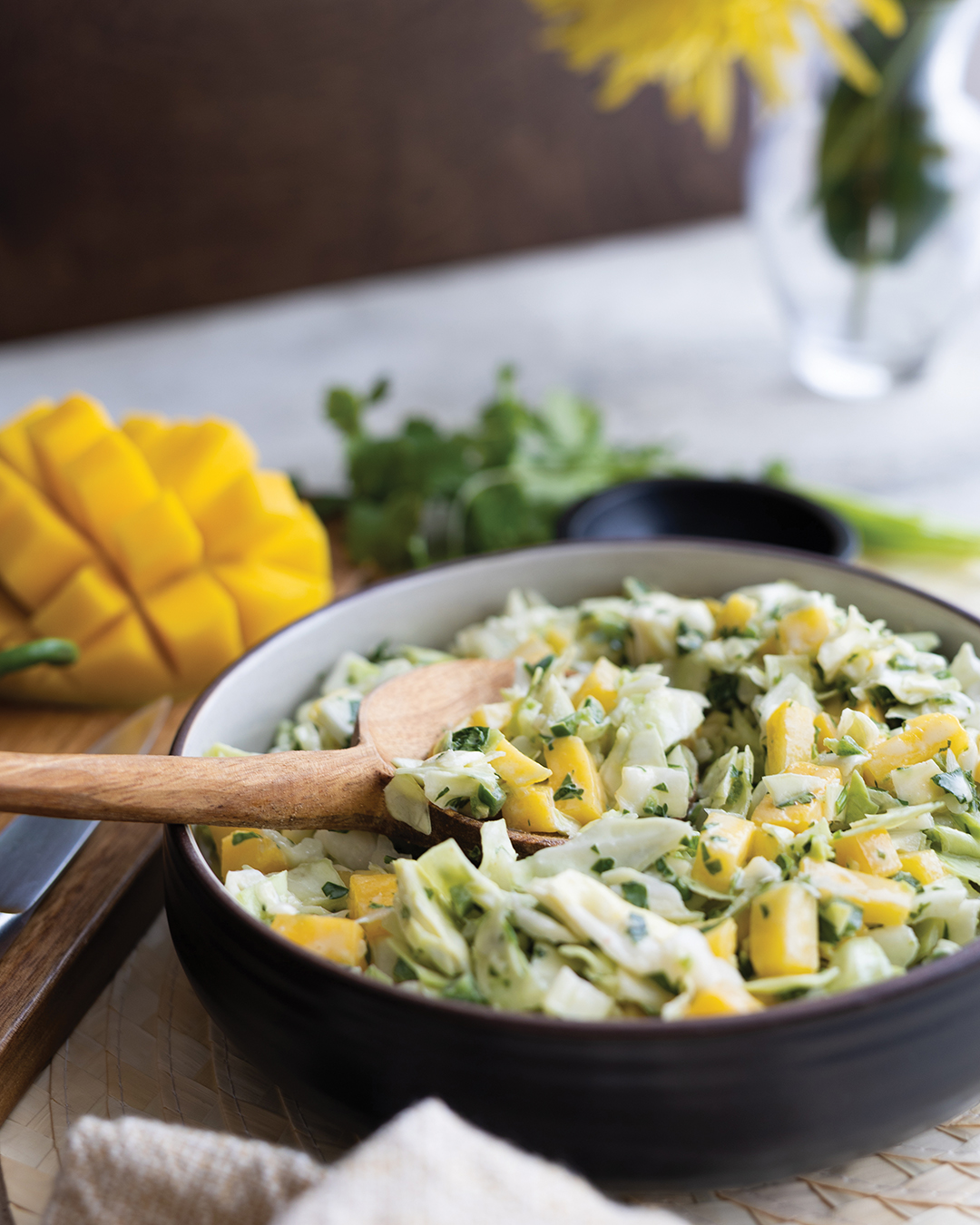Lucky Street chefs bring a fresh twist to traditional Thai cuisine.
After 16 prosperous years in the Mall of America’s (MOA) restaurant scene, Tiger Sushi was due for a change. “Starting about 2016, we saw the shopping traffic at MOA begin to drop dramatically,” says Lisa Edevold, owner of Tiger Sushi and now Lucky Street.
It became clear the restaurant needed to make a move, and, luckily, it landed in Plymouth. Edevold and her team took the new start as an opportunity to reinvent the restaurant. “We noticed that there were no Thai restaurants in the area,” she says. Since the Tiger Sushi chefs were as gifted in Thai cooking as they were in sushi, the team decided to switch things up—but not everything needed changing.
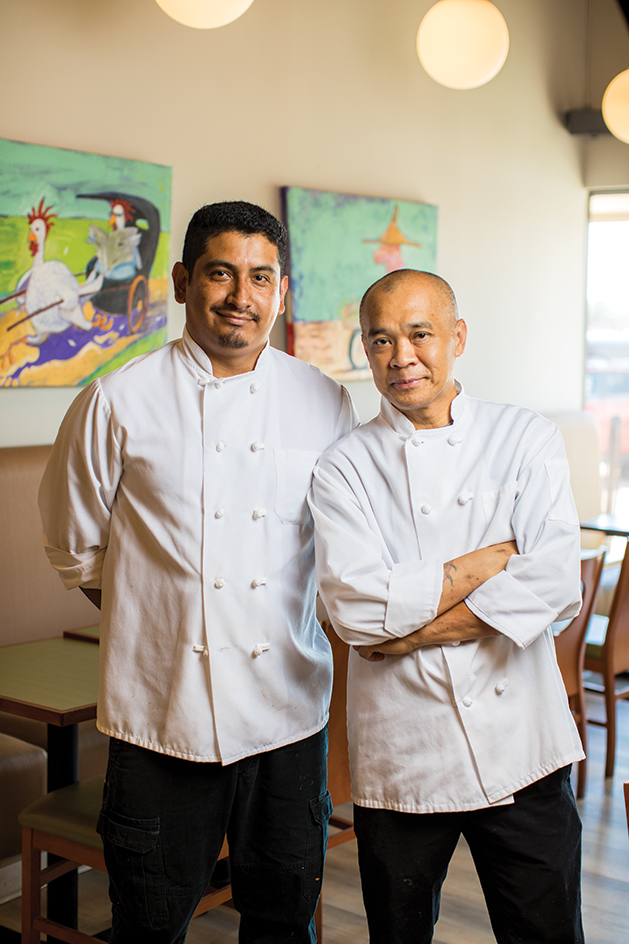
Felix Navas and Victor Phommachanh serve up their style. Photos: Chris Emeott
Meet the Executive Chefs
At age 20, Felix Navas left his home in Guatemala to join his brothers in the United States. Navas landed a position as a line cook at Edina’s Kozy’s Steak and Seafood and knew he’d found his calling. When a regular customer recommended he visit Tiger Sushi for a roll, Navas took the advice one step further and applied for a job at the restaurant. His efficiency as a prep cook caught the attention of “Tiger” Katayama. When Katayama retired in 2014, it was Navas who took over as manager of the kitchen and sushi bar, which is the position Navas holds at Lucky Street.
Vixaysak “Victor” Phommachanh fled Laos when he was 18. After spending two years in a refugee camp in Thailand, Phommachanh came to the United States and began working as a dishwasher to support his family. His work ethic and culinary flair soon caught the attention of the chefs at Minneapolis’ Ichiban Japanese Sushi and Steakhouse, and they took him under their wing. By 2005, Phommachanh had worked in some of the best sushi restaurants in the Twin Cities and began his role at Tiger Sushi, where he was head sushi chef for 14 years.
Where did you learn to cook?
Phommachanh: In my village in Laos, my mother and aunts showed me how to cook the traditional dishes. Later, in the refugee camp in Thailand, I was taught the Thai dishes, too, which are very similar to Laos. I was chosen from my family to be the one to go to the U.S. and work; my job was to send money home to the family.
What brought you to Tiger Sushi and Lucky Street?
Phommachanh: I had started to make a name for myself at Nami as a sushi chef. But there, I had to adhere closely to their menu and follow exactly as their head chef said. Then, in about 2005, Tiger Sushi offered me a job, but they also allowed me the freedom to create and make menu items that I wanted. They encouraged the fusion of flavors from other cultures. The owner, Lisa, would never order her food from the menu. She would say, “Victor … Make me happy.” That meant go create something “wow!” Often, it was loved so much, it ended up on the menu (Crazy Soup or Red Thai Stir Fry) and quickly became a bestseller. When they opened Lucky Street, they told me, “We don’t want Americanized Thai food. We want what you’d buy from a street vendor in your home country—authentic, bold, traditional, like I cook at home for my family.
What are your culinary specialties?
Navas: My sauces are what make my sushi rolls so unique. Anyone can cut fish and roll it with rice. It’s the sauces that make the magic. I make several very nice sushi sauces—a creamy mango sauce from fresh mangos and Japanese mayonnaise. I make a sauce called Tiger Sauce that is a blend of pickled serrano [chili peppers] and wasabi. The absolute cult favorite sauce I make is called Screaming Sauce. For this, we make pickled habaneros and then blend them into Japanese mayo for a creamy hot sauce that our customers can’t get enough of.
Phommachanh: Crazy Soup is one of my specialties. It is a very traditional soup from my home. It starts with a clear broth, vegetables, shrimp and noodles. But hidden at the bottom of the bowl is my sunken treasure: A “ball” blended of coconut milk, peanut butter and red curry. As the ball melts, the soup gets creamy and delicious. I also make a red Thai sauce that is my own creation. In Laos and Thailand, our food is French-influenced (from the French occupation). I add some tricks from that French influence, which are a secret but give the sauce a depth and richness.
What inspires your cooking style?
Navas: I love to bring a fusion of Latin flavors to my sushi—from the hot Screaming Sauce to adding lime and cilantro. One of the best-selling sushi rolls, called Kickin’ n’ Screamin’, pays homage to my roots in Guatemala. It is topped with thinly sliced jalapenos, cilantro and drizzled with my Screaming Sauce.
What is a must-have cooking tool for you?
Navas: A good sushi chef is only as good as his knife. A high quality, Japanese sushi knife is essential. They are very expensive, and I own [mine]. Tiger Katayama taught me how to sharpen my knife correctly. I sharpen it every day, always wash it by hand and always replace it back into its case. Without it, I could not make the intricate cuts at the fast pace that I need to keep up with the demand.
Phommachanh: A three-tiered steamer pot is essential in Asian wok cooking so as to not overcook your meats. We pre-cook our chicken, beef and pork by steaming them in this three-tier metal steamer. Cooking fast in a very hot wok is the key to good Thai stir fry dishes. So, when it’s time to toss together a wok dish in a very hot wok, we add the meat at the very end so as not to overcook. The steaming is the key; it ensures the meat stays juicy and moist even in the high heat of the wok.

